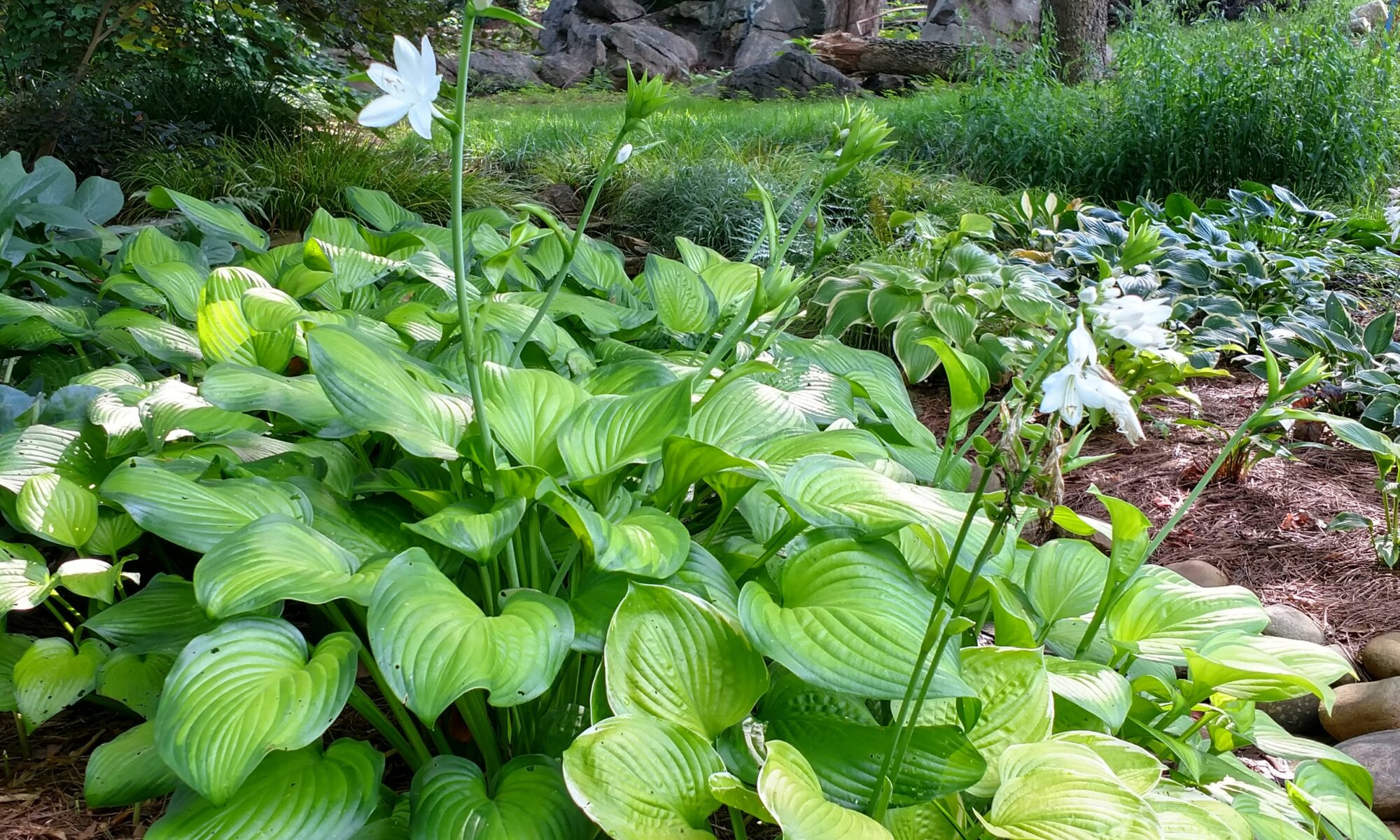
UT Gardens’ May Plant of the Month
Submitted by Mary Lewnes Albrecht, professor emerita, Department of Plant Sciences, UT Gardens, Knoxville.
With more than 10,000 or so cultivars to choose from, why not try hostas?
Hosta species and cultivars, sometimes called plantain lily, are very easy to grow in the garden. They are the queen of the shade garden. Many with white to yellow foliage can take some morning sun, but all need protection from the hot afternoon and evening sun.
Plant in compost-amended soil and keep the plants well-watered, especially during establishment or dry spells. There’s a saying when it comes to hosta – first year they sleep, second year they creep, and the third year they leap! So be patient!
Hostas come in all sizes: minis (up to 7 inches tall), small (8 to 11 inches), medium (12 to 18 inches), large (19 to 24 inches) and giant (over 25 inches), so they can fit in just about anywhere in any shade garden. And they also do well in pots.
The foliage can be shades of blue, green, yellow and variegated with white to yellow in the middle or on the margins; some with very waxy leaves. Others have leaves that are thin and easily eaten by scales and slugs. Unfortunately, deer love them, too, regardless of the leaf thickness.
Breeders are introducing shades of red in the petioles and hoping to get the pigment in the leaves. Some form neat clumps, others can spread slowly. Flowering will vary with the cultivar, mostly white to lavender to purple and summer to autumn. Hummingbirds, bees and other pollinators are attracted to the flowers.
So, where do you start? With the very reliable, large, mounding hosta named ‘Guacamole.’ This one has shiny chartreuse/apple green leaves margined by a wide green edge. Large, fragrant, pale lavender flowers appear in August. Plus, it’s a fast grower and can handle some sun.
To see more hosta, visit the Cornelia B. Holland Tranquility Hosta Garden, an American Hosta Society Display Garden, at the UT Gardens, Knoxville. To learn more also check out the East Tennessee Hosta Society website: easttnhostasociety.net.
The UT Gardens includes plant collections located in Knoxville, Crossville and Jackson, Tennessee. Designated as the official botanical garden for the State of Tennessee, the UT Gardens are part of the UT Institute of Agriculture. The Gardens’ mission is to foster appreciation, education and stewardship of plants through garden displays, educational programs and research trials. The Gardens are open during all seasons and free to the public.